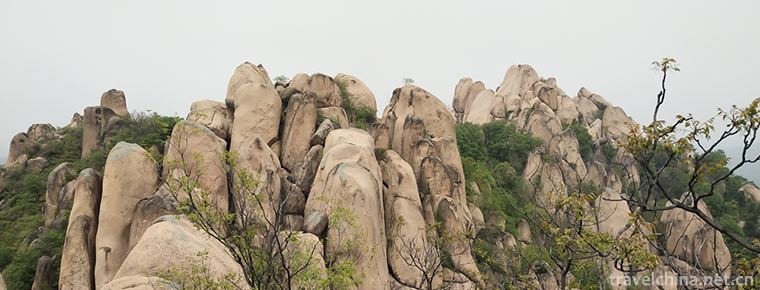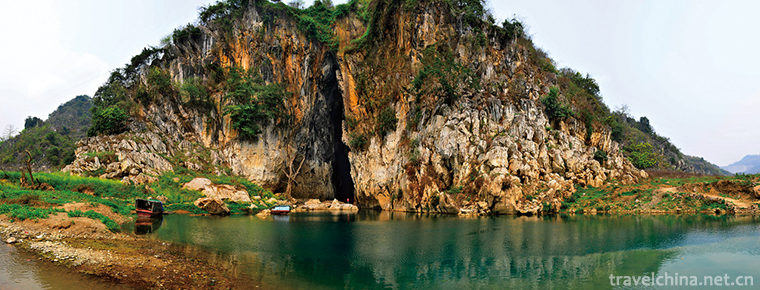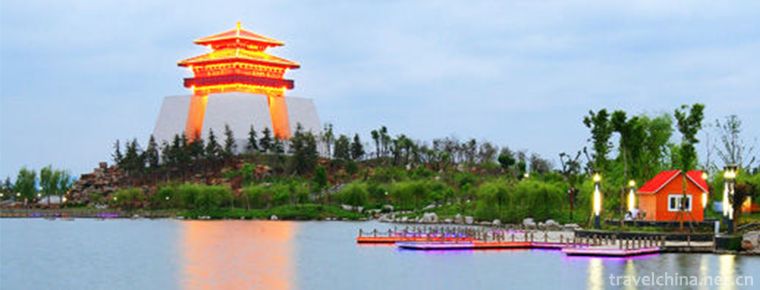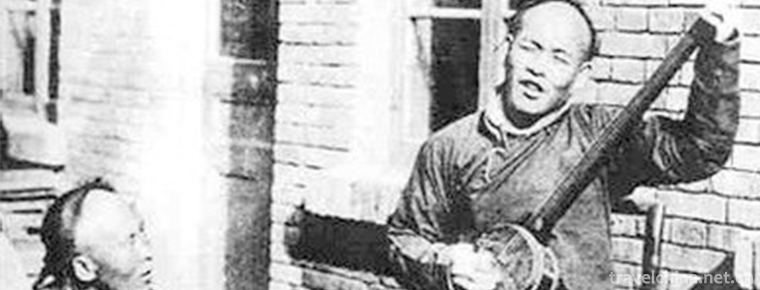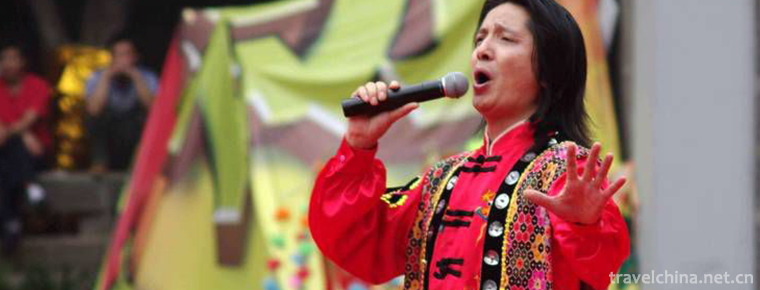Cold Noodles with Sesame Sauce
Cold Noodles with Sesame Sauce are also called cold noodles, also known as "over-water noodles". It originated from the Tang Dynasty . It refers to cold noodles. The main ingredients are noodles and vegetables. The ingredients are chilli oil, salt, monosodium glutamate and so on. However, cold noodles in different places have different practices and ingredients.
In many parts of the world, there are cold noodles, which are popular in summer.
Cold noodles, also known as "water surface," the ancient name of "cold pan", legend originated in the Tang Dynasty before Wu Zetian entered the palace, because Wu Zetian and his lover eat Shanxi noodles scalded tongue, so the two people will study a new way to eat cold noodles.
Du Fu, a great poet, once wrote a poem called "cold leaves of the leaves of Sophora japonica". The new noodles come near the market, and the juice is applied to each other. It is cold to snow, and advise people to throw this bead. The poet said that "cold noodles with locust leaves" refers to green noodles made from fresh and tender locust leaf juice and noodles. Green itself is a cold color, coupled with cooked noodles washed over water, will naturally give people a "cool" feeling.
Cold noodles are eaten everywhere, tastes everywhere, and features everywhere, such as cold noodles in the Central Plains (Henan), cold noodles in Sichuan, cold noodles with red oil in Shaanxi, cold noodles with hemp sauce in Shandong, cold noodles with eggs in Guangdong, cold noodles with thick strips in Shanghai, and cold noodles with willow leaves in Shanxi. Tianjin's "cold noodles with brine", Beijing's "cold noodles with vegetable shreds", Lanzhou's "cold noodles with clear soup and beef", Hubei's "cold noodles with fried sauce", and so on.
According to legend, when Emperor Gaozong of the Tang Dynasty, Wu (Wu Zetian), the daughter of the warrior of the Ministry of Works, was selected as a talented person by Emperor Taizong of the Tang Dynasty at the age of 14. At that time, because of her fate, she had to leave her childhood sweetheart boyfriend Chang Jianfeng. When Wu Mei Niang was young, she used to swim in the bay with Jianfeng, and there was a noodle shop at the ferry. Every time they swam across the river, they always went to the noodle shop to eat a bowl. Therefore, he became familiar with the shopkeeper, and often ate light noodles while making, and after a period of time he had a deeper understanding of this. Later, they thought it would be nice to eat a cold noodle in summer. So he and the shop master together with the experiment, and finally developed a kind of soft and delicious rice paste, soft and sticky. Mei Niang and Jianfeng were so happy that they hugged together. When the chef saw the scene, he made fun of the couple. It was better to call it "Cool noodles with rice for husband and wife". It happened that it was Mei Niang's birthday again. The cooked noodles with rice for husband and wife were born in this way. It spread and became a local food that everyone liked to eat. Later, Mei Niang went to Kyoto Changan. Although she and Chang Jianfeng did not become husband and wife, the couple's noodles were handed down.
Later, Wu Mei-niang became empress and missed the idea of "couple rice noodles". On her birthday, she was ordered to cook a bowl of rice noodles for her by the imperial cook. Thus, until her birthday, the steamed rice noodles were still widely eaten in Guangyuan, Sichuan, but in other places, it was almost impossible to eat authentic rice noodles steamed by the empress.
Guangyuan cold noodles, also known as steamed cold noodles, special products of Guangyuan City, Sichuan province. It is produced only in Guangyuan and its neighboring counties and towns. Its taste gradually decreases with the distance from the center of the city. Its appearance is similar to Shaanxi cold skin, but its raw material is rice rather than flour. It can be steamed for 5-8 minutes by spreading a layer of cloth in the drawer cage. After steaming, it can be poured onto a desk covered with sesame oil or rape oil. Cool noodles are chewy, refreshing and can be eaten in a variety of ways. The most common way is to put them in a bowl and add soy sauce, spicy red oil (dense), vinegar (a little), salt, monosodium glutamate, garlic water (chopped garlic and then added water), pepper and cooked oil (refined from clear oil) to make them palatable. It depends on the taste. If you don't want spicy red oil, add cooked oil. Finally, it can be decided by the taste. Add leeks, bean sprouts, celery, peanuts, mustard, etc. (usually with bean sprouts). After mixing, it has 5 flavors: sour, sweet, spicy, spicy and fragrant. Sichuan is full of flavor. The taste is smooth and refreshing. It can be eaten hot or cold. Each has its own flavor.
As the saying goes, "cold noodles are just Jianmen Pass". It shows the magic of Guangyuan rice noodles. From the water and soil of Guangyuan, no taste of Guangyuan cold noodles can be produced anywhere. Some people have tried in Guangyuan, but the taste is very bad, after several tests, no one dare to mention in Guangyuan outside the city to make cold noodles, then become a specialty of Guangyuan.










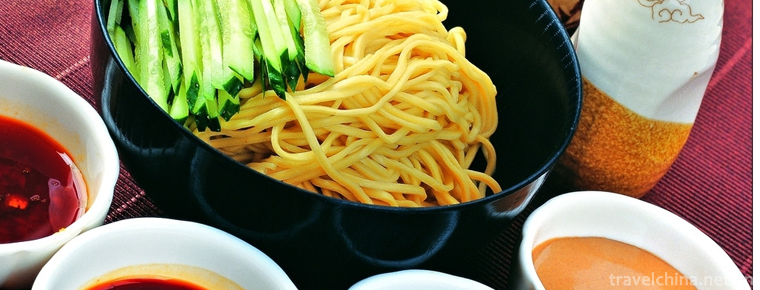
-
Chengji Mountain Tourist Scenic Spot
Qiu Mountain, also known as Linglong Mountain, Xianshan Mountain on a journey to the West and Qiu Mountain Scenic Area, is located in Suiping County, Zhumadian City, Henan Province.
Views: 129 Time 2018-12-09 -
Dajing gate
Dajinmen, the national key cultural relics protection unit. Located at the northern end of Zhangjiakou City, it was built in the first year of Shunzhi in the Qing Dynasty (1644 A.D.) and has a history.
Views: 283 Time 2019-01-06 -
Yanzidong in Jianshui County
Jianshui Swallow Cave is located in the Lujiang River Valley, more than 20 kilometers east of Jianshui County, Honghe Hani and Yi Autonomous Prefecture, Yunnan Province..
Views: 107 Time 2019-01-21 -
Zaozhuang Old Street Shuicheng South Shandong
Shuicheng Zaozhuang Old Street in Southern Shandong Province is located in the middle section of Xichang Road in the Central District of Zaozhuang City, Shandong Province. .
Views: 154 Time 2019-02-06 -
Venus Inkstone Making Skills
Venus inkstone making technology, the local traditional handmade inkstone making technology in Xingzi County, Jiangxi Province, is one of the national intangible cultural heritage..
Views: 263 Time 2019-05-07 -
Ningxia Xiaoqu
Ningxia Xiaoqu, a national intangible cultural heritage project, is a traditional rap art form with strong local characteristics..
Views: 220 Time 2019-06-08 -
Shizhu Tujia Luoer Diao
Shizhu Tujia Luoer Diao originated from Shizhu Tujia Autonomous County, Chongqing. It is a folk song of Luoer tune, which is popular among the Han and Tujia nationalities in southeastern Chongqing. It.
Views: 282 Time 2019-06-15 -
Water Encouragement
Water drum dance is a kind of popular dance spread between the De'ang and Miao nationalities. It combines water, drum and dance to worship ancestors, pray for good weather and peace in villages. Howev.
Views: 140 Time 2019-06-15 -
Time and reason of Ding Zhen popularity
Ding zhenhuo, a 20-year-old Tibetan Boy from Ganzi, Sichuan Province, was caught up in a short video of less than 10 seconds. The uploader of the video and the photographer "BOGO" who shot Ding Zhen also attracted netizens' attention. Talking about his first impression of Ding Zhen.
Views: 241 Time 2020-12-06 -
Mineral resources in Leshan
Leshan City is rich in mineral resources, 34 kinds of mineral resources have been proved, especially non-metallic minerals, with great development potential. Among them, the total amount of proven rock salt resources is 10.5 billion tons, with an annual.
Views: 151 Time 2020-12-17 -
Leshan specialty food
Leshan bean curd is one of the special snacks in Leshan, Sichuan Province. The bean curd has deep red pepper and green coriander or celery..
Views: 78 Time 2020-12-17 -
Meishan secondary industry
By the end of 2019, there were 596 Industrial Enterprises above Designated Size, and the added value of industries above designated size increased by 9.8%. In the whole year, 82 kinds of products from industries above Designated Size participated in the statistics,.
Views: 316 Time 2020-12-18
